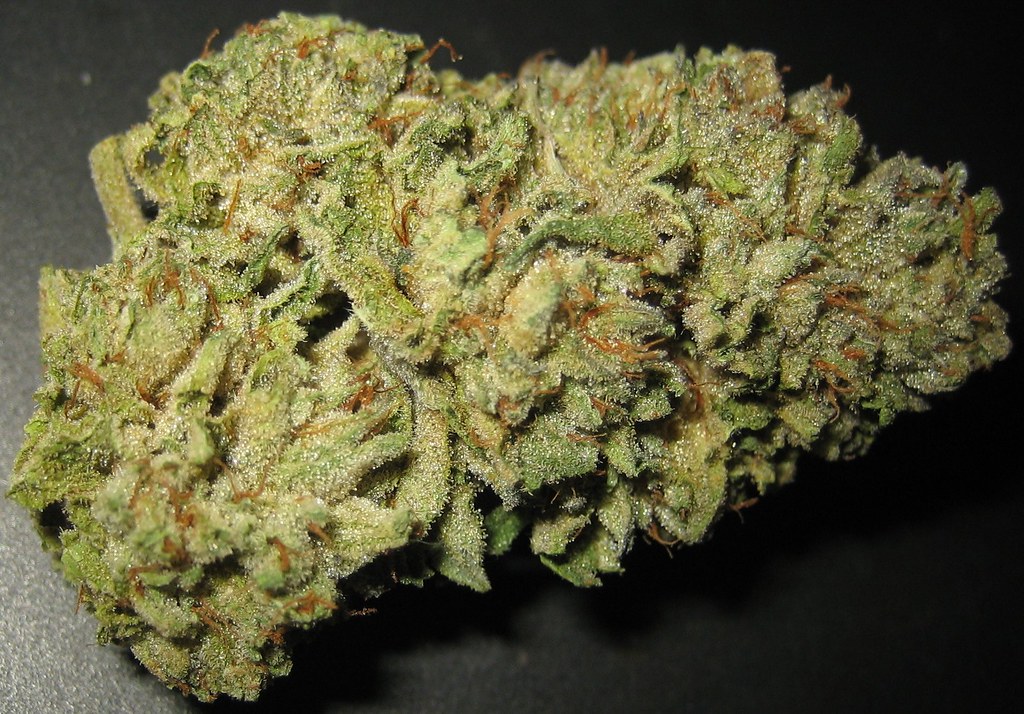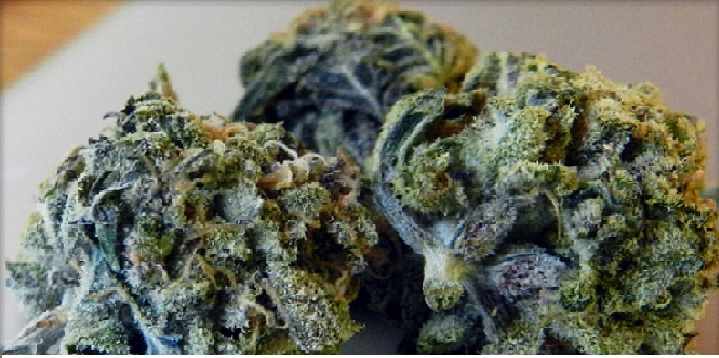Introduction
Tigermelon is a cannabis strain that stands out in the diverse world of marijuana for its unique characteristics and effects. This hybrid strain has gained recognition for its intriguing flavor profile, potent effects, and robust growth characteristics. Named evocatively to reflect its striking appearance and effects, Tigermelon offers a compelling choice for both recreational and medicinal users. This comprehensive guide delves into the origins, appearance, effects, cultivation practices, and comparisons of Tigermelon, and concludes with answers to frequently asked questions.
Origins and History
Breeding and Genetics
Tigermelon is a hybrid strain resulting from the crossbreeding of two distinct cannabis varieties. It is a blend of Tropical Melon and Tigershark, each contributing unique traits to the offspring. Tropical Melon, known for its fruity flavors and relaxing effects, combines with Tigershark, which is noted for its powerful, well-balanced high and complex flavor profile. This genetic combination results in Tigermelon, a hybrid that exhibits both sativa and indica characteristics, offering a balanced and enjoyable experience.
The breeding process for Tigermelon aimed to enhance the desirable traits of its parent strains—flavor, aroma, and effects—while minimizing less desirable characteristics. The result is a strain that provides a harmonious blend of both parent strains’ best qualities.
Historical Background
The name “Tigermelon” reflects the strain’s visually striking appearance and its hybrid nature. The name evokes imagery of a vibrant, exotic fruit with a bold, eye-catching design, akin to the strain’s appearance and effects. While the exact history of Tigermelon’s development is less documented compared to some more established strains, it has quickly garnered attention for its distinctive qualities and potent effects.
Appearance and Aroma
Visual Characteristics
Tigermelon buds are notable for their striking appearance. The buds are typically dense and well-formed, with a rich color palette that includes deep greens, bright oranges, and purple hues. The plant’s leaves often feature vibrant streaks, adding to its visually appealing nature. The buds are covered in a generous layer of trichomes, which gives them a frosty, crystalline appearance and signifies high potency.
The plant itself has a robust and bushy growth pattern, characteristic of many hybrid strains. Its resilience and adaptability make it suitable for various growing environments, including indoor and outdoor settings.
Aroma and Flavor Profile
The aroma of Tigermelon is a complex and inviting blend of fruity, citrusy, and earthy notes. The strain exudes a strong, sweet scent reminiscent of tropical fruits, with underlying hints of spice and earthiness. This aromatic profile makes Tigermelon a favorite among users who appreciate rich and multifaceted scents.
On the palate, Tigermelon offers a delightful flavor experience. The taste is primarily fruity, with prominent melon and citrus notes. This is complemented by subtle hints of spice and earth, creating a well-rounded and enjoyable flavor profile. The flavor can linger pleasantly on the palate, enhancing the overall smoking or vaping experience.
Effects and Therapeutic Uses
Psychoactive Effects
Tigermelon provides a balanced set of effects, combining the best attributes of both sativa and indica strains. Users often report an initial burst of euphoria and mental stimulation, which is characteristic of its sativa heritage. This uplifting effect can enhance mood, increase creativity, and improve focus.
As the high progresses, Tigermelon transitions into a more relaxing and soothing experience, thanks to its indica influence. This shift results in a calming body high that alleviates tension and promotes relaxation without causing excessive sedation. The balanced nature of Tigermelon’s effects makes it suitable for a range of activities, from social engagements to creative endeavors and relaxation.
Therapeutic Benefits
Tigermelon offers several therapeutic benefits due to its balanced effects and rich cannabinoid profile. The strain can be effective in managing symptoms of anxiety and depression, providing mood enhancement and stress relief. Its euphoric and uplifting effects contribute to a sense of well-being and emotional stability.
For individuals dealing with chronic pain, Tigermelon’s relaxing body high can offer relief and comfort. The strain’s ability to reduce muscle tension and alleviate discomfort makes it a valuable option for pain management. Additionally, Tigermelon’s soothing effects can aid in improving sleep quality for those with insomnia or sleep disturbances.
Cultivation and Growing Tips
Growing Environment
Tigermelon can be cultivated successfully both indoors and outdoors, though indoor growing allows for greater control over environmental conditions. The strain thrives in a warm, sunny climate with well-draining soil when grown outdoors. For indoor cultivation, providing a stable environment with controlled temperature and humidity levels is crucial for optimal growth.
Growth Characteristics
Tigermelon plants are characterized by their bushy, compact growth pattern. They typically reach a moderate height, making them suitable for various growing spaces. The strain has a flowering period of approximately 8 to 10 weeks, during which it produces dense, resinous buds with vibrant colors.
Tips for Successful Cultivation
Climate Control
Maintain stable temperatures between 70-80°F (21-27°C) during the day and slightly cooler temperatures at night. Ensure proper ventilation and air circulation to prevent mold and mildew.
Nutrient Management
Provide a balanced nutrient regimen, with attention to both vegetative and flowering stages. Monitor pH levels and adjust nutrients as needed to support healthy growth and maximize yield.
Training Techniques
Utilize training techniques such as topping and low-stress training (LST) to manage plant height and improve light distribution. These practices can enhance bud development and overall yield.
Common Challenges and Troubleshooting
Pest and Disease Management
Tigermelon plants can be susceptible to pests such as spider mites, aphids, and whiteflies. Regular inspections and the use of organic pest control methods can help manage infestations. Additionally, monitor for signs of fungal diseases like powdery mildew and bud rot, and ensure proper airflow and humidity control to prevent these issues.
Nutrient Deficiencies
Signs of nutrient deficiencies in Tigermelon may include yellowing leaves, poor bud development, or stunted growth. Address these issues by adjusting nutrient levels and ensuring a balanced diet. Regular soil testing and monitoring can help prevent and correct deficiencies.
Comparison with Other Strains
Tigermelon vs. Tropicana Cookies
Tropicana Cookies is a sativa-dominant hybrid known for its fruity flavors and uplifting effects. Compared to Tigermelon, Tropicana Cookies typically has a more pronounced citrus flavor and a more pronounced mental stimulation. Tigermelon offers a more balanced experience with a mix of fruity, earthy, and spicy notes.
Tigermelon vs. Watermelon Zkittlez
Watermelon Zkittlez is an indica-dominant hybrid known for its sweet, fruity flavor and relaxing effects. While both Tigermelon and Watermelon Zkittlez share fruity flavor profiles, Tigermelon tends to offer a more complex and balanced experience, with a blend of citrus and earthy notes, and a more harmonious high.
Tigermelon vs. Gelato
Gelato is a popular hybrid strain with a sweet, dessert-like flavor and balanced effects. Compared to Tigermelon, Gelato generally has a more pronounced sweetness and a more intense body high. Tigermelon, on the other hand, offers a more nuanced flavor profile with a mix of fruity and earthy notes and a balanced set of effects.
Legal Status and Regulations
Legal Status in the United States
The legal status of Tigermelon marijuana varies by state. In regions where cannabis is legal for recreational or medicinal use, Tigermelon may be available at licensed dispensaries. It is essential to check local regulations to ensure compliance with state laws regarding the cultivation and use of cannabis.
Legal Status Internationally
Internationally, the legal status of cannabis strains like Tigermelon varies widely. In countries where cannabis is legal, the strain may be available for purchase. However, in regions where cannabis remains illegal, its cultivation and use are prohibited. Always be aware of and comply with local laws and regulations concerning cannabis.
FAQs
What is the THC and CBD content of Tigermelon?
Tigermelon typically has a THC content ranging from 18% to 22%, with low to moderate CBD levels. The high THC content contributes to the strain’s potent effects and overall experience.
How should I store Tigermelon to maintain its quality?
To preserve the quality of Tigermelon, store it in an airtight container in a cool, dark place. Avoid exposure to light, heat, and humidity, which can degrade the potency and flavor of the cannabis.
Can Tigermelon help with anxiety and depression?
Yes, Tigermelon’s balanced effects can help alleviate symptoms of anxiety and depression. The strain’s mood-lifting properties and relaxation benefits can enhance overall well-being and provide relief from stress.
How long does it take for Tigermelon to flower?
Tigermelon has a flowering period of approximately 8 to 10 weeks. This flowering time allows for the development of dense, resinous buds and a well-rounded final product.
What are the ideal growing conditions for Tigermelon?
Tigermelon thrives in a warm, sunny climate with well-draining soil. For indoor cultivation, maintain stable temperatures between 70-80°F (21-27°C) and ensure proper ventilation and air circulation.
Is Tigermelon suitable for beginners?
Tigermelon can be suitable for beginners due to its balanced effects and manageable growth characteristics. However, some experience with cannabis cultivation may be beneficial for optimizing results and addressing specific growing needs.
How does Tigermelon compare to other hybrid strains?
Tigermelon stands out among hybrid strains for its unique flavor profile and balanced effects. Compared to other hybrids, it offers a distinctive mix of fruity, citrusy, and earthy notes, with a well-rounded high that combines mental stimulation and physical relaxation.
Conclusion
Tigermelon is a distinctive hybrid strain that offers a unique blend of flavors, effects, and growth characteristics. Its balanced nature, combined with its fruity aroma and enjoyable effects, makes it a popular choice among cannabis enthusiasts. Understanding Tigermelon’s origins, appearance, effects, and cultivation requirements can enhance your experience and help you make informed decisions about its use and cultivation.
- What Is The Connection Between Gaslighting And Emotional Abuse In Relationships? - May 31, 2025
- What Not To Do After Nose Botox? - May 31, 2025
- Retinol Peel Near Thames Ditton, Surrey - May 30, 2025



